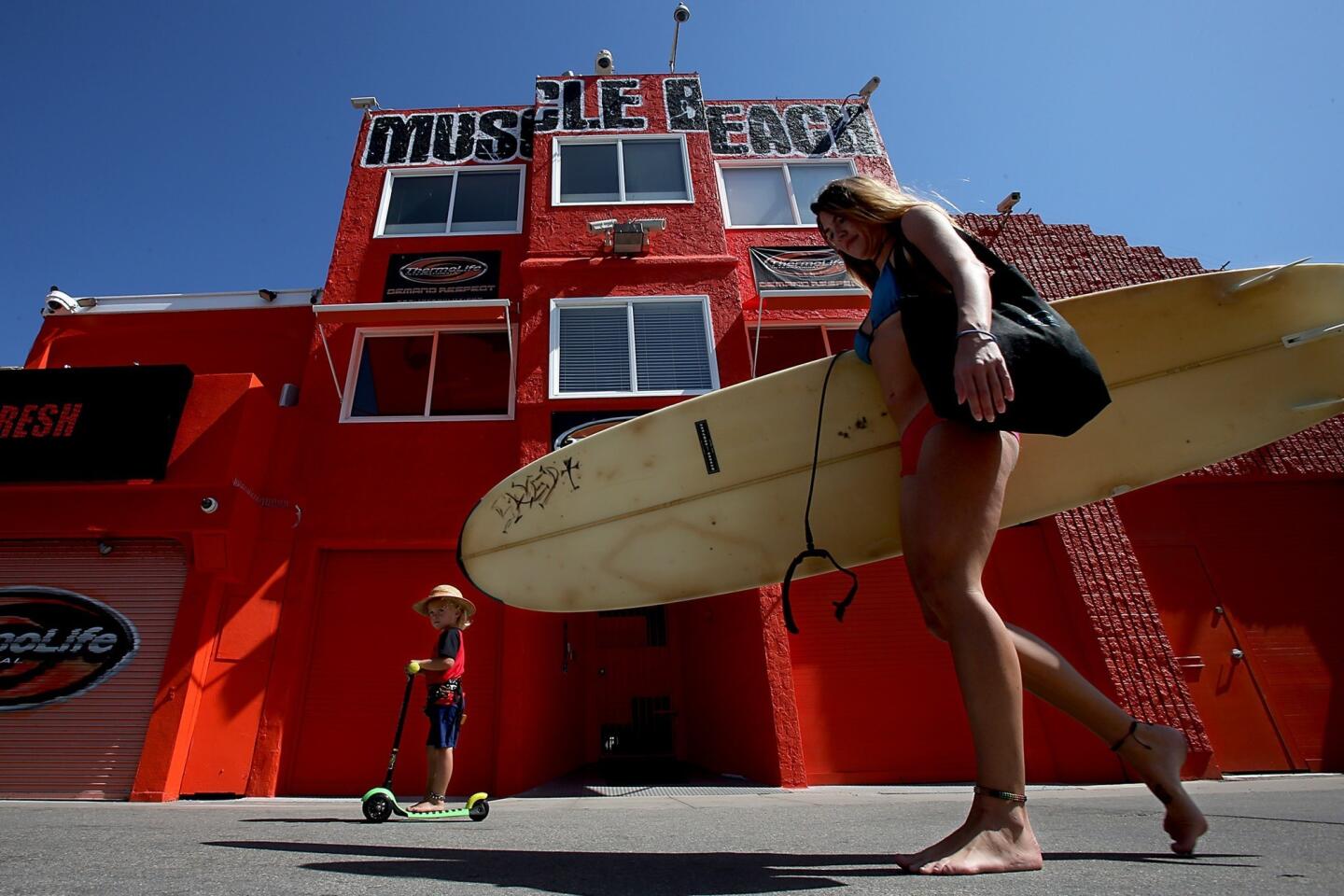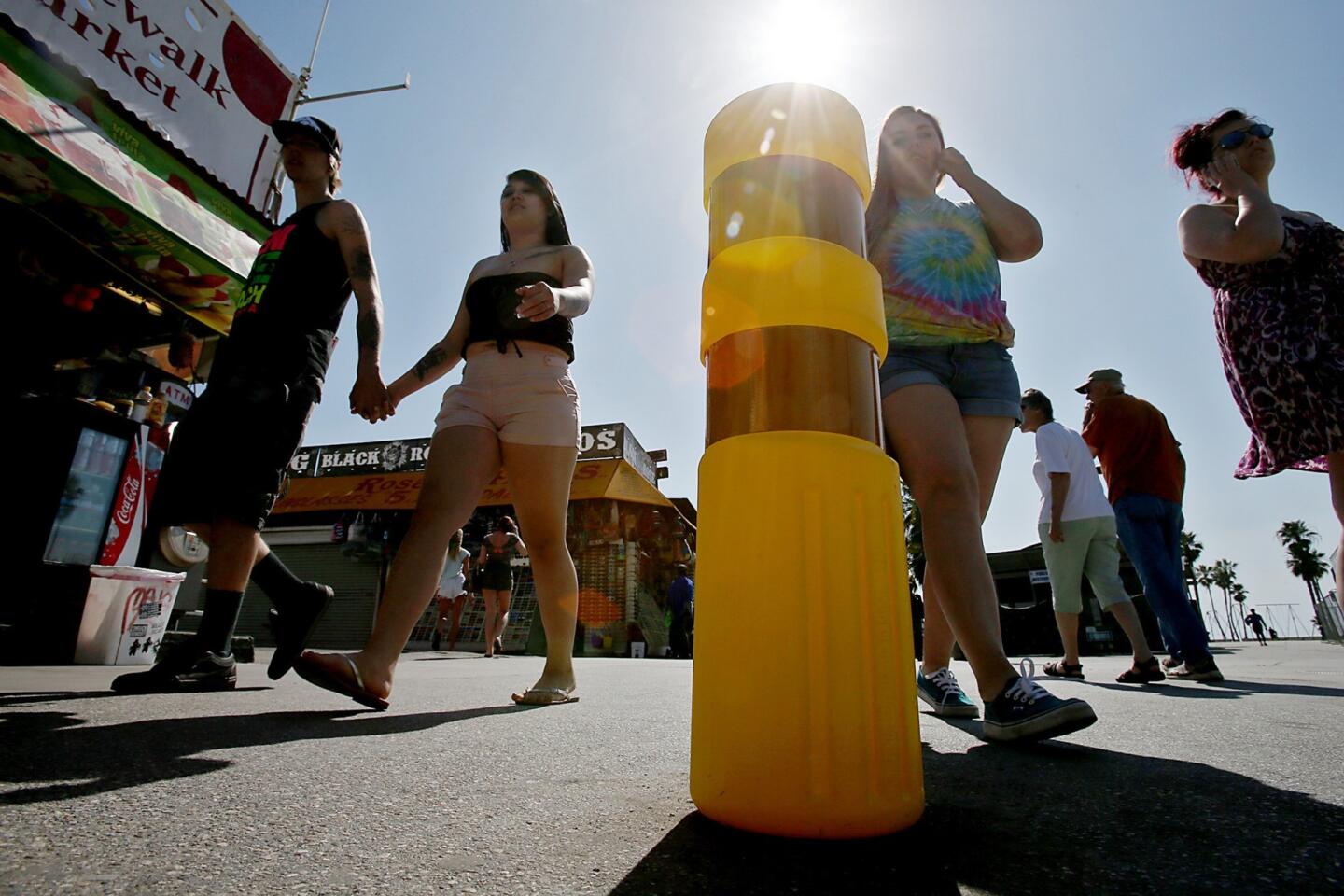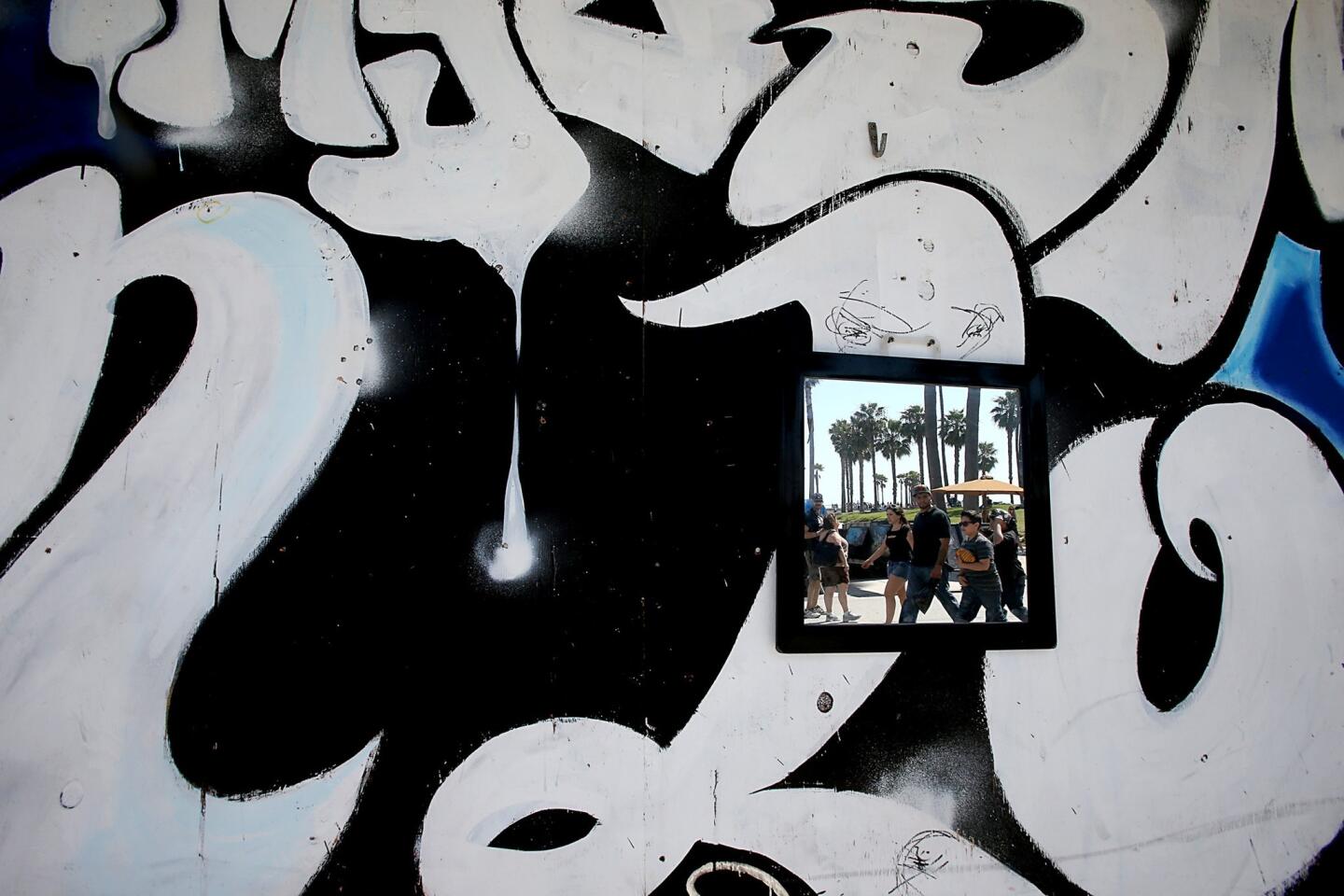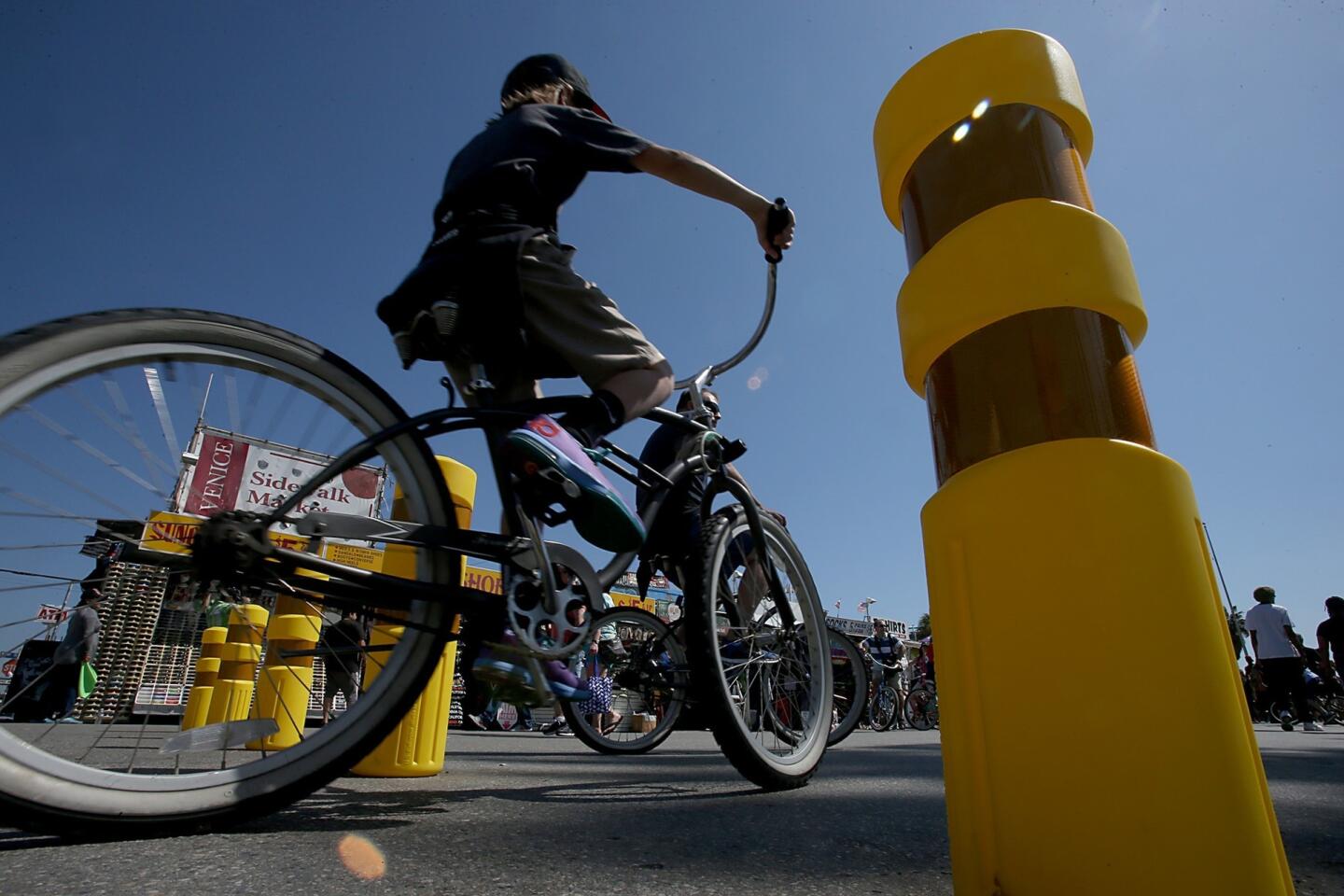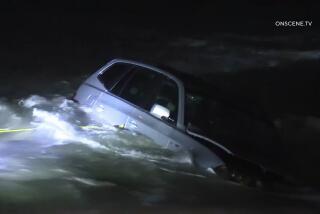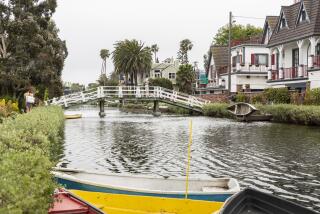Officials seek to tame Venice boardwalk
Spencer Davis was chatting up tourists on the Venice boardwalk when police officers pulled up in front of his display of plastic alien heads.
Had Davis seen a man threatening people with a chain saw, they asked?
“Not today,” he quipped with a smile, assuming that the officers were joking.
Then he turned around and saw police officers, their guns drawn, with a man holding a chain saw.
“Just when you think you’ve seen it all…” Davis said.
For all the gentrification, designer homes and tourist attractions, Venice is still that kind of place — where artists, the homeless, Silicon Beach hipsters, surfers, inline skaters and tourists come together along a circus-like boardwalk.
Over the last few decades, the city has tried to tame the scene on Ocean Front Walk, but with limited success. Now, City Hall is making what some locals consider the most concerted effort yet to bring control to the area.
The city is considering a series of safety measures, including security cameras, more lights and a public address system, as well as closing off about 20 of the 32 streets that dead-end onto Ocean Front Walk. To accomplish that, the plan also calls for the installation of automated retractable posts, as well as gates, planters or other measures at the locations to prevent cars from getting onto the boardwalk.
Councilman Mike Bonin, who represents the area, is also talking about eventually appointing a governing board to oversee the boardwalk, to keep a lid on problems and plan for its future.
“You can never regulate or restrain or direct the spirit of Venice, but you can crack down on criminal behavior and you can clean things up,” Bonin said as a man on the boardwalk tried to hand him a reggae CD.
“This is one of the places the world sees when it comes to Los Angeles.... What face are we showing?”
The efforts are meeting with a mixed reaction. The local neighborhood council has opposed the posts, gates and street closures as being unnecessary. Instead of focusing on security, some community activists say the city should improve basic services such as bathrooms and park maintenance.
Critics say that the city is trying to turn the beloved boardwalk — one of California’s top tourist draws — into “Fortress Venice.”
“If you can’t even go to the beach without being watched,” said Venice Neighborhood Council President Linda Lucks, “where can you go?”
::
The effort to “secure” Ocean Front Walk was sparked by a deadly crash on the boardwalk last summer. On a crowded Saturday evening, a man intentionally drove his car onto Ocean Front Walk. A woman visiting from Italy was killed and several others were hurt.
City workers installed temporary barriers at seven Ocean Front Walk intersections as well as “Dead End” and “Road Closed” signs.
In January, the Los Angeles Police Department’s Pacific Division boosted bike and foot patrols in the area.
For Venice veterans, the campaign has had a familiar ring.
In the 1980s, police cracked down on healers, fortune tellers and other service providers after reports that they were scamming tourists. Over the last two decades, the city crafted ordinances limiting what vendors could sell and times dogs were allowed. There were also bans on such things as motorized scooters as well as musical instruments and amplified sound during certain hours in certain areas.
Each of those moves was met with resistance.
“In Venice, the absolutely basic tenet is, ‘We don’t agree,’ ” said Ruth Galanter, who served the area as a councilwoman for 16 years. “The hard part for elected officials and the Police Department is to acknowledge that, and move forward anyway.”
As in the rest of Los Angeles, crime has declined dramatically in Venice. The neighborhood was once plagued by gang violence. For years, vendors were hit by “cyclones” — bands of robbers who stormed a store, then scattered.
Police increased patrols significantly and some gangs were pushed out as Venice underwent a major gentrification.
But LAPD officers say that crime on the boardwalk remains an issue. A Venice restaurant worker was killed a few blocks from Ocean Front Walk in November, and about a month later, a video camera captured footage of a gang member beating a homeless man with a chair. Two people were arrested after violence erupted at a drum circle earlier this month, and locals say that there are the countless smaller altercations every day that go unreported.
LAPD Pacific Division Capt. Brian Johnson said overall crime was down 4% in 2013, but violent crime was up 9% — due in part to the boardwalk rampage.
Johnson said police have recently focused on “predictive policing” using a computer data system that identifies hot spots where crime is likely to occur. About 30% of the Pacific Division’s hot spots are on or around Ocean Front Walk.
“It’s a reasonable and sensible approach to public safety,” Johnson said of the city’s new plan.
Venice is more divided. But some longtime residents are resigned.
Nick Antonicello, 53, moved to Venice from New Jersey in 1993. He is the first to say that crime is way down and that residents feel safer. But to him, the boardwalk also feels more rundown than it did when he arrived.
“Where’s the general maintenance? Grass cutting, power washing? Timely removal of debris? The place is a mess,” he said.
As Antonicello walked down the boardwalk, street musician Harry Perry rolled by on his skates. Perry, a familiar Venice figure who has played his electric guitar on Ocean Front Walk since 1974, said he has seen officials try all sorts of regulatory maneuvers over the years.
When he arrived, the debate in Venice was over how to avoid accidents between pedestrians and cyclists. Officials ordered a white line drawn down the middle of the boardwalk. Perry was told to skate on one side, while pedestrians walked on the other. And as it turned out, that was just the beginning of the rules, he said.
“They come up with all kinds of stuff,” he said with a shrug. “There’s violence all over the city. They can’t control it.”
More to Read
Start your day right
Sign up for Essential California for news, features and recommendations from the L.A. Times and beyond in your inbox six days a week.
You may occasionally receive promotional content from the Los Angeles Times.
